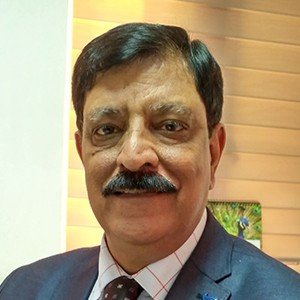The adverse effect of adverbs in patent specifications
31 October 2023

Do you know that there are certain words (adverbs in particular) or phrases that can alter the meaning of a term when used in the context of patent claims? In certain cases, the use of these normal-looking adverbs/terms can severely limit, or even harm, the patentee when such claims are subjected to interpretation by the court in infringement disputes.
Use of these adverbs in patent claims are known amongst the expert drafter of claims to enhance the scope of protection offered to patentee by the patent. If you read a patent document you may find the use of terms like “preferably”, “advantageously” and “optionally” in almost every paragraph explaining the object of the invention and summary. Other such words are chiefly, majority, critical, essential, necessary, solely, only, main, significant, principal, important, fundamental, vital, etc. The use of phrases like “very important feature” or “key feature” and “critical feature or “necessarily” was very common until courts found these terms and phrases as limiting the scope of a claim.
Use of these words in a patent specification often opens the door for the argument of the alleged infringer to convince the court to read these limitations into patent claims. This is what happened in recent case of FMC Corporation v. Natco Pharma Limited, (December 5, 2022) [2022/DHC/005311]where the Single Bench and on appeal the Division Bench of the Delhi High Court have taken seemingly a very strict approach to the interpretation of FMC’s claims.
FMC process patent No. 298645 was for a “Method for preparing N-Phenylpyrazole-1-Carboxamides”. FMC also has several other patents related to the manufacture of chlorantraniliprole (CTPR).The claims in this case appear to mention that the process could occur in any sequence. But the court interpreted it as the “most preferrable” sequence in view of the use of the term “preferred” in the description. In the description of the invention, it is stated that:
“Sulfonyl chloride compounds preferred for the present method because of their commercial availability include methanesulfonyl chloride (R8 is CH3), propanesulfonyl chloride (R8 is (CH2)2CH3), benzenesulfonyl chloride (R8 is Ph), and p-toluenesulfonyl chloride (R8 is 4-CH3-Ph). Methanesulfonyl chloride is more preferred for reasons of lower cost, ease of addition and/or less waste.”
The court marked the use of the terms “preferred” and “more preferred” in relation to its use as “Sulfonyl chloride compounds preferred for the present method”, and this proved decisive to interpret the claim. The court found the use of the terms “preferred” and “more preferred” in the description as limiting.
When the patentee tried to raise the level of interpretation of claim from the literal meaning to the doctrines of equivalent, the single judge and appeals court found that the use of the words “preferred” and “more preferred” in the description make the use of sulfonyl chloride an integrated part of the invention and an essential element of the method claim. This interpretation of the claim led to framing the comparison of the restricted FMC claim with the Natco Pharma Ltd. process which used thionyl chloride. As a result, the court rejected FMC’s claim for patent infringement by Natco. On the FMC plea for application of the doctrine of equivalents to determine the scope of the claims, the court framed a question as follows: “In the context of this case, the key question to be considered is whether the sulfonyl chloride is an essential element of the suit patent IN’645.”
On reading certain passages of the patent specification as stated, the court held that:
“42. We do not consider it necessary to refer to other passages of ‘the detailed description of the invention’ furnished to the Patent Office. Suffice it to state that they also support the aforesaid view that sulfonyl chloride is not reflected as an incidental part of the invention but an integral part. Prima facie, it would be erroneous to consider the suit patent IN’645 as an invention that does not involve the use of sulfonyl chloride.”
It is interesting to note that the opening paragraph of the description provides clarification for the use of certain terms in the specification, except the terms “preferred” and “more preferred” as follows:
“As used herein, the terms ‘comprises,’ ‘comprising,’ ‘includes,’ ‘including,’ ‘has,’ ‘having’ or any other variation thereof, are intended to cover a non-exclusive inclusion. For example, a composition, process, method, article, or apparatus that comprises a list of elements is not necessarily limited to only those elements but may include other elements not expressly listed or inherent to such composition, process, method, article, or apparatus. Further, unless expressly stated to the contrary, ‘or’ refers to an inclusive or and not to an exclusive or. For example, a condition A or B is satisfied by any one of the following: A is true (or present) and B is false (or not present), A is false (or not present) and B is true (or present), and both A and B are true (or present).
Combining chemicals refers to contacting the chemicals with each other.
Also, the indefinite articles ‘a’ and ‘an’ preceding an element or component of the invention are intended to be non-restrictive regarding the number of instances (i.e. occurrences) of the element or component. Therefore ‘a’ or ‘an’ should be read to include one or at least one, and the singular word form of the element or component also includes the plural unless the number is obviously meant to be singular.”
Besides the explanation of the doctrine of equivalence and its application in process patent claims, the FMC case would also go in the history of patent jurisprudence in India for “patent profanity” and particularly its significance in infringement cases as the court may find that use of these seemingly innocent terms (like “preferred” and “more preferred”) to restrict the claim limits. This allowed the competitors (Natco in this case) to get a decision of non-infringement in their favour. The term patent profanity refers to the use of seemingly innocent phrases or terms by the patent drafters to obtain strong patent protection. The drafter of the claims misses the repercussions of such phrases when courts look beyond the claim language and dig deep into the description to identify the meaning of a particular claim. The courts have broad discretion in giving meaning to claim terms and look to the specification and the prosecution history. Some words and phrases, when used in the patent specification or in communications with the examiner, are capable enough to lead a court to attach an unintended and at times unfavourable meaning to the scope of a claim particularly during infringement analysis.
Position of patent profanity in the U.S.
Courts in the U.S., like in India, have broad discretion to identify the meaning of a particular claim term. The courts invariably look into the specification and the prosecution history in giving meaning to claim terms. Use of such terms as discussed above in a patent specification is considered as patent profanity. The court normally gives weight to such use during infringement analysis. This means accused infringers can bring the instances of patent profanity in patent claims to the notice of the court to narrow down the scope of the claims to avoid infringement. For example, T-Mobile USA, Inc., avoided infringement action by drawing attention of the court to the use of the phrase “very important feature” by the patentee. T-Mobile successfully argued that they did not list the same “very important feature” in their product, and it was decided court that there was no infringement by T-Mobile. (TMobile. Inpro II Licensing, S.A.R.L. v. T-Mobile USA, Inc., 450 F.3d 1350 (Fed. Cir. 2006).
In this case, the court found that the patentee described a direct parallel bus interface of its invention as a “very important feature” in the patent specification and that the T-Mobile product did not contain this “very important feature.” The court found this argument convincing to limit the scope of the patent’s claims to include direct parallel bus interfaces. The court ruled that T-Mobile did not infringe the patent.
Similarly, in Pharmacia & Upjohn Co. v. Mylan Pharm., Inc., 170 F.3d 1373 (Fed. Cir. 1999), the Federal Court looked into communications with the USPTO to interpret claim scope. In this case, Mylan was successful in persuading the court to limit Upjohn’s claim scope based on Upjohn’s use of patent profanity in a communication with the USPTO. Mylan brought to the notice of the court a communication from Upjohn in a response to a prior art rejection, where they submitted that “the use of spray-dried lactose is a critical feature of the present invention,” and that “the key feature of the present invention is the particular type of lactose employed in the composition.” This argument convinced the court to accept a narrow reading of the claims due to Upjohn’s use of the terms “critical feature” and “key feature”. When the court interpreted Upjohn’s claim to require spray-dried lactose, the Mylan product was found to be not infringing as its product lacked this “key feature”.
Cautionary remarks
Skilful patent drafting and prosecution are essential steps to afford inventors an opportunity to realize the full scope of protection for their invention. The over-enthusiastic use of patent profanity in the drafting of the patent specification may give reasons to courts to give narrow interpretations to claim terms. Similarly, such use in communications during the prosecution of the application may lead the courts to look beyond the claims. However, if drafters and prosecutors of the patent application are careful and minimize the use of words of characterization when describing the invention, they can diminish the opportunity used by the infringers to prove non-infringement.
Patent profanity is particularly significant in infringement cases, as the use of these seemingly innocent phrases may allow competitors to design around. We have seen how some words and phrases, when used in the patent specification or in communications with the patent office, can inadvertently lead a court to attach an unintended and undesirable meaning to a claim term. Patent drafters and prosecutors should minimize the use of words of characterization when describing the invention to prevent the unintended interpretation of the claims by the court. The scope of claim should not be decreased by the poor wording choices of the patent drafter. Be aware to use such terms judicially, lest the patent profanity argument by the infringer hunts down the scope of the intended patent claims to harm the protection offered by your patent. Expert opinion is useful to improve the quality of the drafting of a patent application and to reap the rewards of the best possible patent protection.








